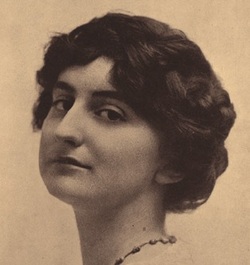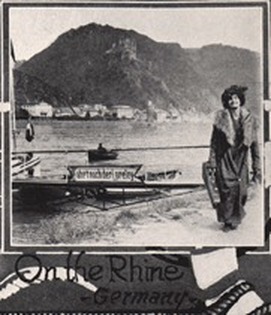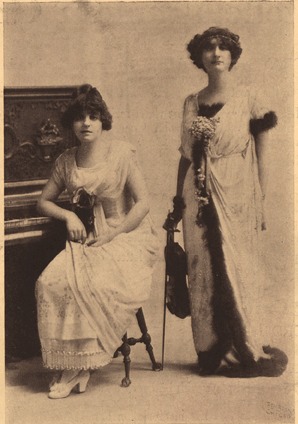

The University of the Pacific gave her “the offer of a cap and gown” at age eleven, and soon afterwards she turned down a scholarship at the University of California in order to study in New York. Gray began giving concerts in New York at age 15, including a series at the Waldorf Astoria, the Plaza, the Astor, and in Aeolian Hall. Playing her way across the U.S. at age 17, Gray ended with a recital at the University of California’s Greek Theater, which seated 8,000 (though the report neglects to say how many seats were filled). A tour of Europe followed this success. More dubious compliments came her way, such as this by Henri Marteau, Joachim’s successor at the Berlin Hochschule: “ Her bow arm is truly remarkable for its freedom and strength. She has the best bowing of any woman I have ever known."

Nuremberg, Bavaria, The Musical Zeitung: “We were amazed to find ourselves so won by the little American artist; the very walls that for centuries have been penetrated with German music , seemed to rejoice at the fresh melodies of the girl from the other world.”
London, The Times: “The young American violiniste, Estelle Gray, is quite extraordinary; her charming winsomeness won before she played a note, and she plays with the vigor of a man.”
Ostend, Belgium. Ciro Patimo, of the Grand Opera Company, said of Miss Gray’s playing: “So feminine and graceful, yet the strength and force of a man. She is the most brilliant of artists.”
San Francisco Examiner: “Miss Gray’s tones are warm and virile. Her manner on the platform instantly enchants with its simplicity and unaffected, unconscious ease... She is equally charming in a lullaby, a gypsy dance, or the heavier work.”
New Haven, Conn. Register: “It was brilliant and thrilling and almost set the audience wild. For an encore she played a sweet lullaby that made one think of home and all the sweetest babies we ever knew.”

Gray’s mother, Mrs. Margaret Ludgate Gray, served as Estelle’s tour manager and promoter (stage mother, anyone?). She also, likely with little prompting, participated in the programs as a “reader.” An early brochure states, “Mrs. Margaret Ludgate Gray always travels with her daughter. Mrs. Gray has studied the art of interpretation under some of the best masters. She is a character delineator of marked ability, and has won popularity from East to West. Mrs. Gray is a great favorite with audiences, with spoken songs, readings with music and character delineations. Her numbers add greatly to the interest and charm of the program.” Or else?
Mother Gray’s role as performance partner was soon to take a back seat with the advent of a new collaborative pianist-- one Mr. Moritz Lhevinne. Stay tuned for the rest of the story...

 RSS Feed
RSS Feed